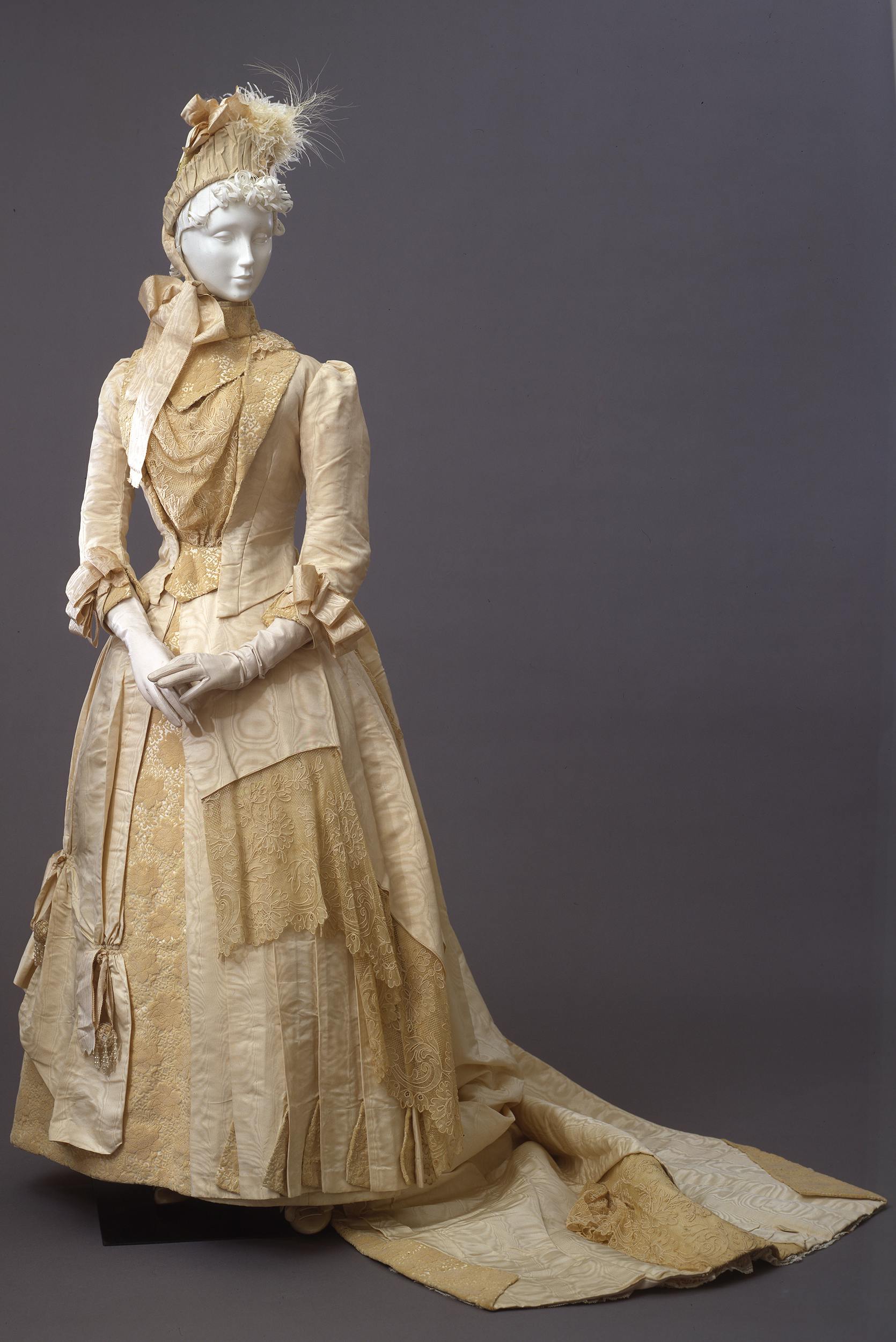Wedding dress with hat, shoes and stockings
Milanese and Roman production (“Gallizier & Oddono/Lanerie Velluti/Seterie Confezioni Novità/Milano via P. Umberto 5.7.”; shoes label “Premiata Calzoleria/A. Giangrandi/Roma - via Frattina 79”)
This three-piece wedding dress (bodice, skirt and train) was made in 1887 for the wedding of Claretta Angelucci in Vitali, and has come down to us complete with hat, shoes and stockings. It bears the label of a well-known Milanese fashion house “Gallizier & Oddono”, which employed Parisian tailors and fabrics for its models.
The combination of silk fabrics is remarkable: Gros de Tour moiré, with its typical marbled ruffled appearance, is combined with textured crushed velvet, i.e. with the fabric forming small rings and distributed to create stylised motifs with roses and ramage.
The dress perfectly embodies the fashion of the 1880s, not only for the combination of two fabrics, one plain and one textured, but also for the asymmetrical draping of the richly decorated skirt, embellished with high flounces in machine-made lace and with pendants made of silk and glass beads. Under the skirt, the volume at the back is created by a tournure, i.e. a structure formed by thin metal semicircles used to shape the typical silhouette. Also the bodice is typical of those years. Despite being made from a single garment, it suggests the illusion of a cuffed short jacket worn over a draped blouse. The sleeves are three-quarter length, and were combined with long gloves covering the hand and wrist.
The long train, buttoned at the waist and attached to the skirt on the side, could be removed to make the dress less formal or more comfortable, for example during the party after the ceremony.
The dress has come down to us with some modifications carried out over time. The front plastron of the bodice had been removed to create a neckline, while the waist had been widened by opening some folds. It can be assumed that the dress was adapted to be used for evening parties, which, differently from daytime events, required to uncover the neck and décolleté. The fact that the plastron was preserved together with the gown allowed to restore the dress to its original form.
The hat is small, as required by the fashion of the decade that suggested to wear it over a high chignon. Like the dress, it is adorned with gros de Tour moiré ribbons and complemented with long white ostrich feathers to highlight its verticality. The shoes, made of ivory silk satin with white glass bead embroidery on the toe, are low-cut, with spool heel, and bear the label “Premiata Calzoleria A. Giangrandi” of Rome.
Donated by Anna Vitali, Firenze.
La Galleria del Costume/4, Centro Di, Firenze, 1990, 58-59
